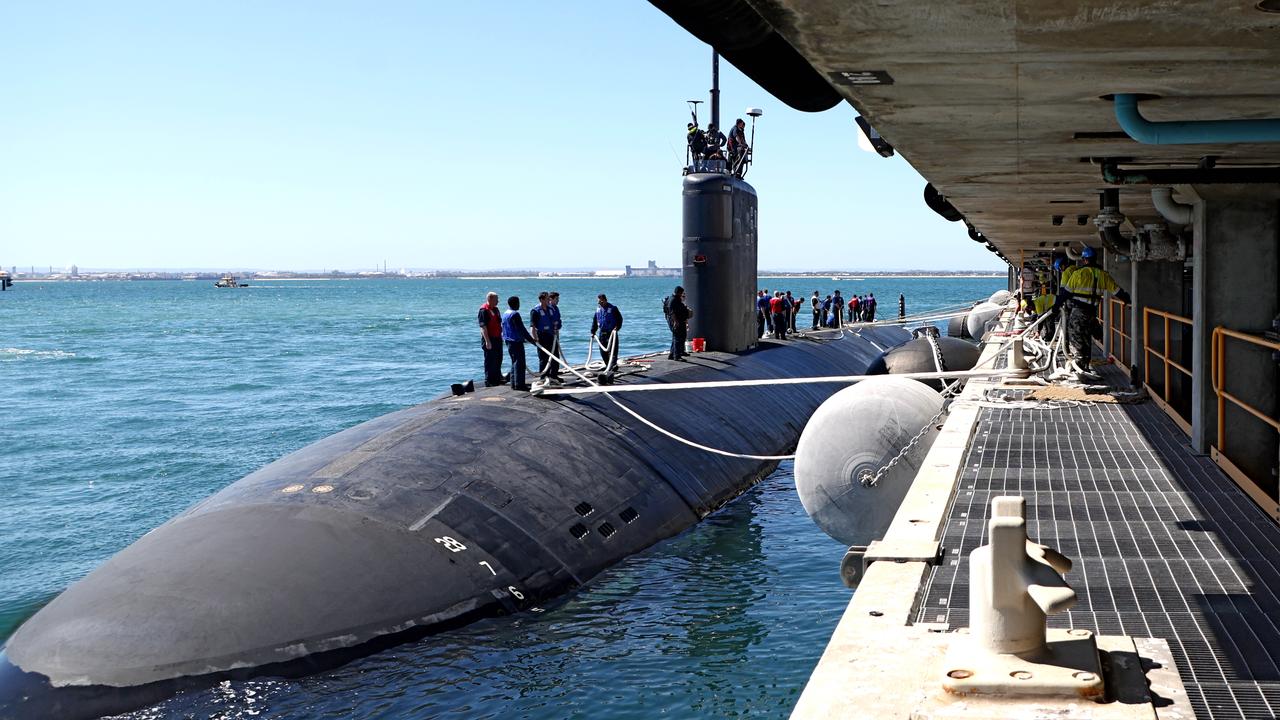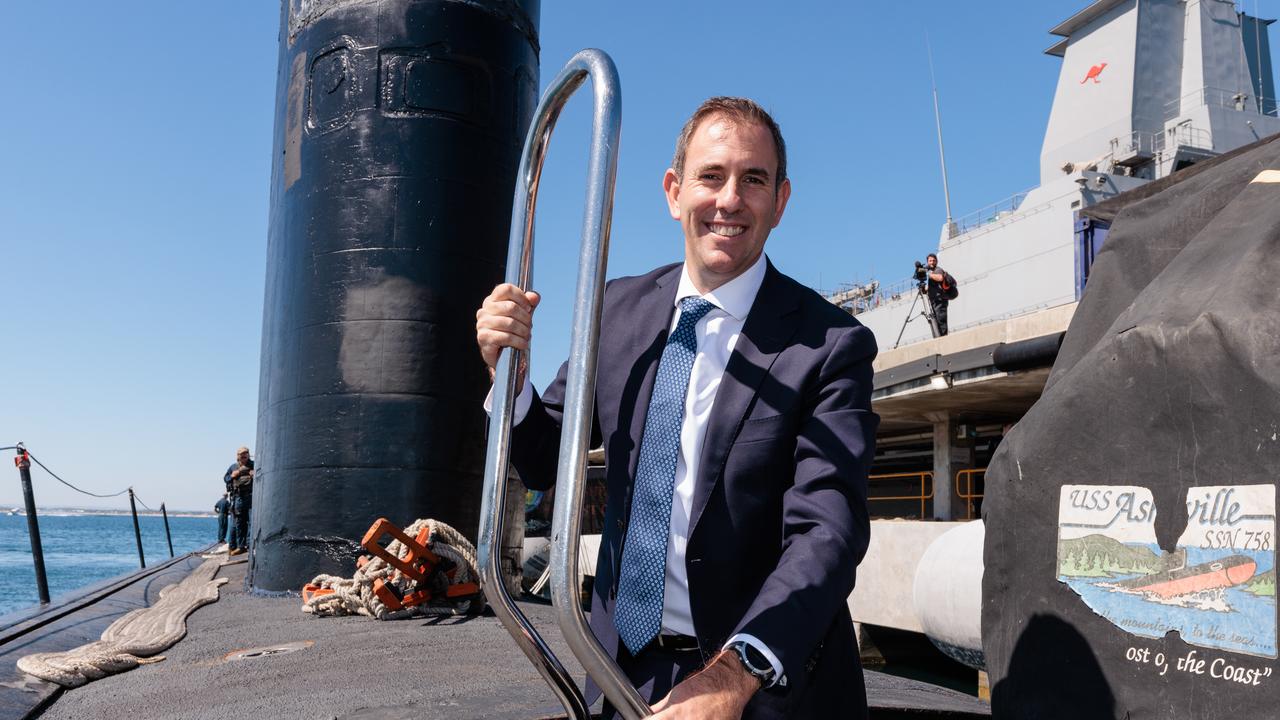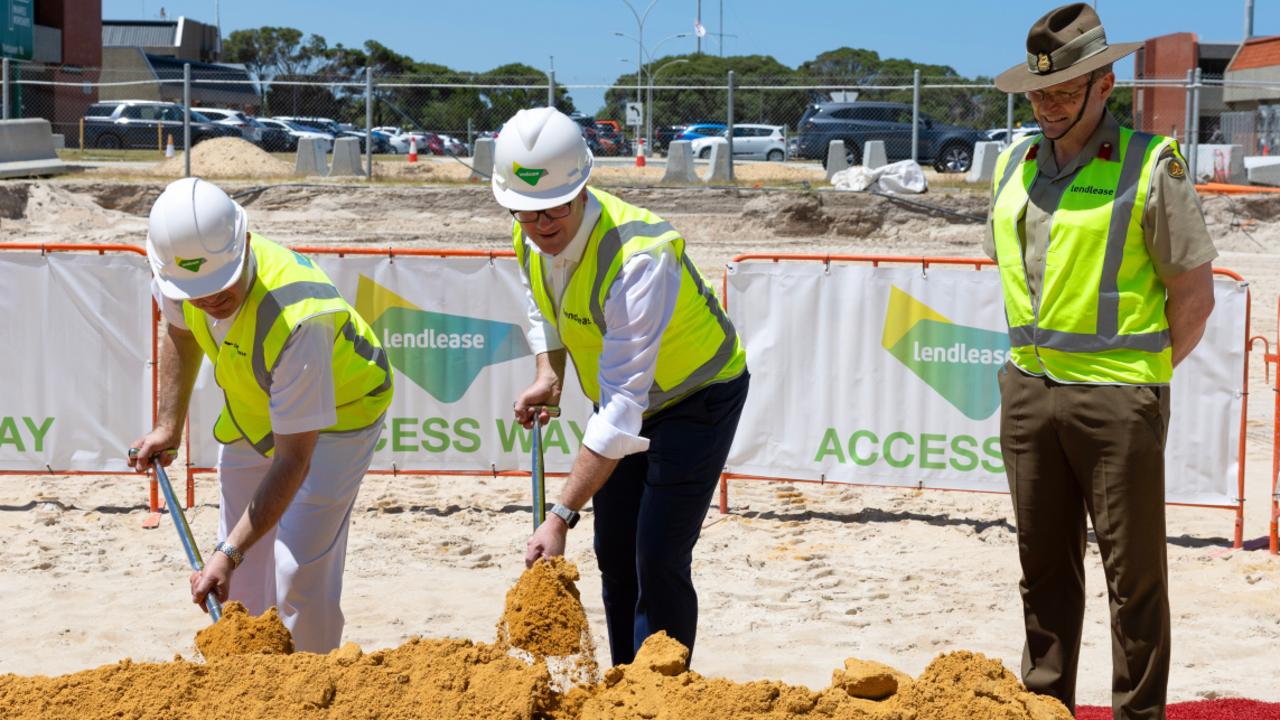How the AUKUS deal is creating financial waves on the ground
There are billions earmarked to be spent, and this Perth-based engineer is among those on the front lines of a defence revolution.

It’s often said that during a gold rush it’s better to be the one selling the picks and shovels than doing all the digging. And that’s how this small Perth-based engineer is riding the big shifts in global politics.
Duratec has largely flown under the radar since it listed on the ASX late in 2020. There’s a good reason why. The work that Duratec and its specialist builders and engineers do is usually out of sight, hard to get to and very often underwater.
Its hundreds of marine specialists have been quietly going about their business of building and strengthening wharves for Western Australia’s iron ore miners and gas exporters.
In other areas, the engineer has been going about the business of ripping out and replacing flammable cladding on high-rises across the country.
Then there’s the day-to-day work of welding, repairs and other necessary things needed to keep the heavy machines and plants running across Western Australia’s mining sites.
However, over the past decade, Duratec has slowly but surely gained ground in the business of defence.

Now it’s the waves of geopolitics that are starting to be felt by businesses like Duratec and even names like Lendlease at the bigger end of the scale.
In this case, the AUKUS agreement is aimed at – eventually – delivering Australia its own fleet of nuclear submarines. The construction and support represents a major retooling of the nation’s industrial base.
This week senior US politicians on both sides of the divide said the AUKUS security pact is a model for how the US should engage with allies around the world.
The nuclear-powered Aussie subs might still be decades away, but there’s $8bn of work linked to AUKUS to be done right now in Perth.
Much of this is getting HMAS Stirling, the Garden Island naval base that’s offshore of Fremantle, match fit so UK and US nuclear-powered submarines can be based there from as early as 2027.
For Chris Oates, the chief executive of the Duratec, it’s not the boom and bust world of ship building that excites him, rather it’s the everyday infrastructure that’s needed to keep the defence facility in shape.
AUKUS will be “game-changing stuff” for companies like Duratec, Oates says.
The Weekend Australian recently caught up Oates in Sydney, just as he was on the tail end of an investor roadshow.
He had finished more than three dozen back-to-back meetings with fund managers and analysts over the week, in a sign the market was starting to take a serious interest in the $400m engineering group.

The reason for Oates’ diary is being filled out is simple. With defence spending to be measured as percentage points of GDP as the AUKUS alliance ramps up, there are very few avenues for Australian investors to get exposure to this.
As a builder, Duratec offers additional appeal given they are nowhere near weapons manufacturing or handling, something that would be a red flag for most fund managers.
Nor are they involved in capital-intensive manufacturing that becomes costly to scale as projects ramp up and crushes margins.
The local ownership, security clearances, and a track record of working on highly-sensitive sites gives Duratec a headstart when it comes to others pitching for more work.
To get a sense of the scale that’s coming, Canberra is slated to spend $56bn on defence this year, including on the newly-formed Australian Submarine Agency. Much of the construction work will be sent out to small contractors on the ground.
This is forecast to increase to around $100bn annually within a decade, budget papers show. Much of this will be on infrastructure to support the submarines, and investors are looking for a way in.
The lumpy nature of how work is being awarded is also changing, and this means there’s more certainty for smaller players like Duratec when it comes to securing work.
It’s a potential win for the taxpayer, given the long history of costs blowing out on defence projects.
More jobs are being awarded across Garden Island under the early contractor involvement model. This is a fairly novel concept in defence, but has been used widely on a mining project where the contractor is placed alongside a job designer at the beginning.
Given there are tight timelines to deliver the defence projects, this means the demand is to start the construction jobs as early as possible.

Essentially, as the project is being designed, the construction contractor works along the way, puts out a tender out to the market, for steel or cabling or concreting even before final designs are finished.
This dramatically speeds up work and the designer and the client, in this case defence, get real time feedback on the cost of the project and can make adjustments around it. By the end of the design process, this means it’s Duratec’s contract to lose when the construction job comes along.
“It’s collaboration at its purest, says Oates. “The beauty of that is, you can start from day one, because you’re getting paid to build your team through it. There’s efficiency built in into the process.
“And what happens is you will always get a safer outcome in quality, and you can provide value for money because they’ve got their people on their side interrogating every step.
“We’ve always said to them, the earlier you include or involve us in trying to problem-solve and remove those complexities, the better your project would run”.
“That early contractor involvement is huge in order to build trust. And once you have trust with your client, they’re looking for reasons to give you the job”.
In recent months, Duratec and its joint venture partner, the privately-owned engineering group Ertec (a 20 per cent Duratec founding shareholder) have secured two ECI-style contracts for Garden Island.
In isolation they are not big dollars, but the bigger jobs that come after the planning phase are Duretec’s to lose. Currently the work represents 100 direct jobs and is expected to build up to 300. Already the company employs more than 1100.
The first contract involves infrastructure upgrades to support future submarine capability at HMAS Stirling. The second and bigger works involve the delivery of nuclear regulatory compliant facilities to support submarines under AUKUS. Both works contracts are scheduled to start later this year, with delivery by 2027.
Oates says his team are training to become accredited on nuclear builds, which involves upskilling in the UK.
This means Duratec will be one of the first companies in Australia and ultimately one of a handful globally that will be qualified to work in the extreme demands called for in a nuclear environment.
It recently upgraded earnings and revenue forecast for this year. It has a committed forward order book of more than $400m and $1.5bn of work tendered, but not yet awarded.
Lendlease, does not discuss specific defence projects, but the builder has disclosed it is doing $4.7bn of preferred defence construction work across NSW and WA, including HMAS Stirling.

Oates brings up Garden Island on Google Maps on his laptop. He points to one thing after another.
“We’ve removed a lot of asbestos; replaced panels there. We’ve done fuel upgrades here and run cables out to the wharves. We did that bridge with remediation.”
He keeps pointing. “We’ve got an early contract on an extension of Parkes Wharf – that’s a 320 metre extension.”
He highlights another Diamantina Pier that will need to be strengthened in order to support the weight of a nuclear sub. Combined, the two wharf jobs have been budgeted to cost around $730m.
Elsewhere, there are pipes to be replaced, buildings to be refurbished, and on it goes. Part of the work requires building several levels of redundancy into anything that will be used to support nuclear-powered equipment.
He then looks at the map in its entirety. “As the AUKUS deal is pushed out to 2040, every year there’s something happening – there’s a lot of work ahead,” Oates says.
“Defence will rival our mining industry – I’ve said this to a couple of people, and they all laugh at me”.
“If you’ve been to Perth Airport in the morning, you’ll see thousands of people involved in mining. We know the power of mining, but if you think, even if this comes close – it’s going to be quite phenomenal”.
eric.johnston@news.com.au
Originally published as How the AUKUS deal is creating financial waves on the ground



